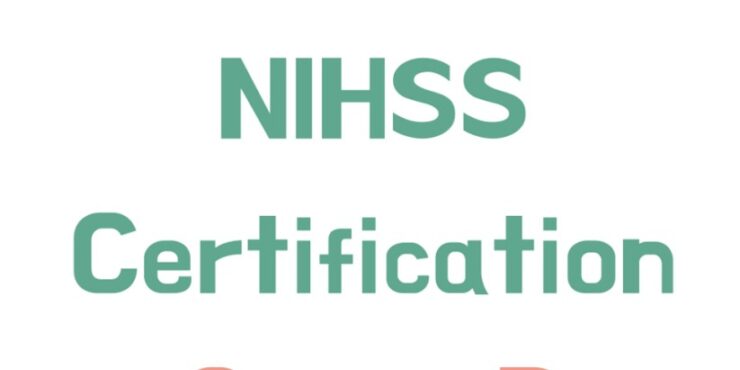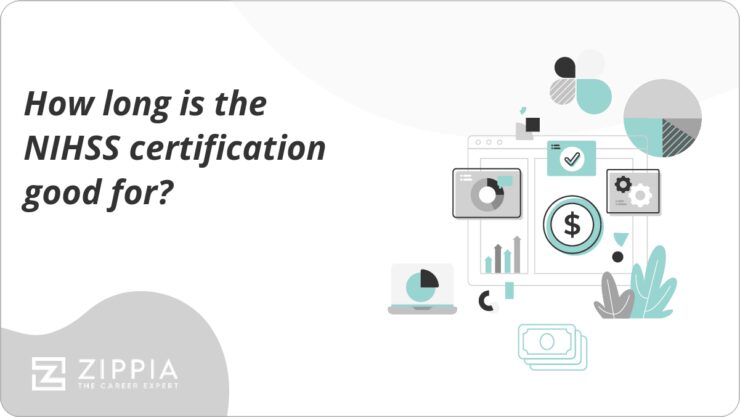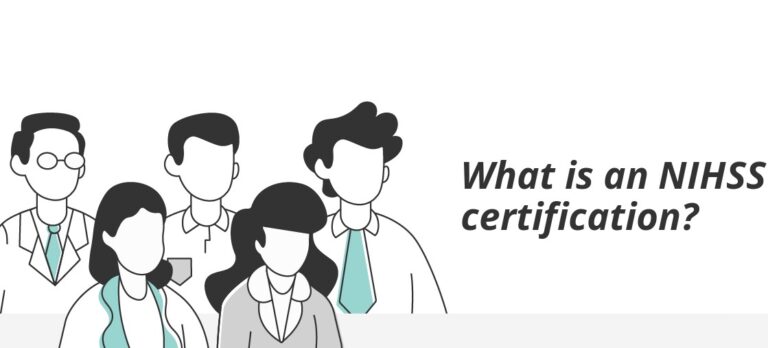When it comes to stroke assessment, the NIH Stroke Scale certification is one of the most important measures. The scale helps clinicians measure and track patient progress and can be used to make decisions about treatment. But what are the pros and cons of getting certified in this area? This blog post will take a closer look at the NIH Stroke Scale certification process and help you decide if it’s right for you.
What certification is NIHSS?

NIHSS certification is necessary for any clinical staff taking care of stroke patients. The NIH Stroke Scale is a medical assessment tool used to observe a patient’s condition after they’ve had a stroke. It estimates the intensity of the stroke, how much it has affected a person’s ability to function, and their likelihood of recuperation. The NIHSS helps track a patient’s progress during recovery and is used by doctors to make choices about treatment and future care plans.
About NIH Stroke Scale
The NIH Stroke Scale certification is important for assessing stroke patients and tracking their progress. It is used to estimate the severity of the stroke, assess a person’s ability to function and determine their recovery potential. The scale also helps doctors make decisions about treatment and future care plans. To become certified in this area, clinicians can take courses online from NIHSS.
This school offers National Institutes of Health Stroke Scale (NIHSS) Certification and NHISS. These courses generally range from two to eight hours in length, with a median time of six hours, and are free for everyone. Additionally, those who complete their certification will receive a certificate from NIHSS that they can show to demonstrate their expertise in the field of stroke assessment.
In order to prepare for the certification process, it is recommended that students review material related to stroke assessment, such as clinical practice guidelines and recent research studies. It is also helpful to watch instructional videos or attend seminars on the subject matter so that one can gain a better understanding of the scale itself and its implications on patient care.
Finally, clinicians should stay up-to-date on current evidence-based practices and trends so they can apply them while using the NIH Stroke Scale during evaluations. With adequate preparation and study, any healthcare professional can complete certification in this area and help improve patient care outcomes for stroke patients.
According to those who have attended, the main benefits of attending NIH Stroke Scale (NIHSS) are that it is affordable and prepares you well for a career. Additionally, respondents also found the class hours to be flexible. On average, reviewers rated NIH Stroke Scale (NIHSS) 4.67 out of 5 stars, and 100% said they would recommend it to others.
Pros of NIH Stroke Scale Certification
The primary benefit of becoming certified in the NIH Stroke Scale is that it will enable clinicians to assess their patients accurately. This assessment is essential for making informed decisions about treatments and will help ensure patients receive the right care.
Additionally, certification shows expertise in this area and can benefit job opportunities. Furthermore, the certification process is free and online, so it’s accessible to anyone who wants to learn more about stroke assessment.
Cons of NIH Stroke Scale Certification
One of the drawbacks of getting certified in this area is that it requires a significant investment of time and energy. The courses are not easy to complete and require dedication for students to understand important aspects of stroke evaluation.
Additionally, due to its complexity, the scale may be difficult for some clinicians to understand and interpret correctly. Finally, depending on where one works, having an NIH Stroke Scale certification may not always be necessary or even useful.
Is NIH stroke scale-free?

The amount of time it takes to finish this education training varies from 2 to 8 hours depending on the qualification, with a median completion time of 6 hours. The cost to attend NIH Stroke Scale (NIHSS) is $10. It’s free for anyone to take part, but those who successfully complete the training can get a certificate from NIHSS.
Where to get free answers on NIHSS?
Free answers can be found on a variety of websites. Most of them provide you with correct and up-to-date answers, but some websites have incorrect ones. We recommend you use reliable sources such as the NIH Stroke Scale website, Medscape, and Quizzma NIH Stroke Scale Certification Answers to get the most accurate answers.
How often do you get NIHSS certification?
We recommend that people recertify for the NIHSS training one year after their initial certification. After the first successful recertification, then they should only have to do it again two years later. If someone has four successful recertifications under their belt, though, then the intervals between repeating the process can increase to every three years.
How many questions are on the NIHSS certification?
The NIHSS score is the sum of 15 questions, each assessing different neurological functions such as motor skills, language comprehension, and level of consciousness. All questions must be answered correctly in order to get an accurate score.
What score do you need to pass NIHSS?
The NIHSS score is calculated by summing the individual scores from each item. The maximum possible score is 42, and the minimum score is 0. Generally speaking, a mild stroke ranges from 0-4 points, moderate strokes are 5-15 points, and severe strokes have a 16 or higher point total; however, actually required scores for certification vary depending on where the certification is coming from.
Conclusion

The NIH Stroke Scale certification can be a valuable tool for healthcare professionals who want to assess their patients and make informed decisions about treatment accurately. However, the certification requires dedication and practice in order to be successful, depending on where one works. It may not always be necessary or even useful.
Nevertheless, those looking to become certified in this area can take free online courses from NIHSS and receive a certificate that they can show to demonstrate their expertise in stroke assessment.
By reviewing information related to stroke assessments, watching instructional videos, attending seminars on the subject matter, and staying up-to-date on current evidence-based practices and trends, any healthcare professional can confidently complete their NIH Stroke Scale certification. With adequate preparation, this certification can help clinicians improve patient care outcomes for stroke patients.
Overall, the NIH Stroke Scale certification has both pros and cons that should be considered before taking on the challenge of completing it. With dedication, however, any healthcare professional can benefit from having this certification and help make a positive difference in the lives of stroke patients.
Related Posts:
- 20 Best Gaming Headset Under 50$ 2024 - for PC, PS4,…
- 12 Best Car Wax For Black Cars 2024 - Protection and…
- Which is Better for Medical Tourism: National or…
- 15 Best Shoes for Walking on Concrete 2024 - Soft &…
- Effective Remote Patient Monitoring Program
- Top 10 Best Scrubs For Women 2024 - Pants for Nurses…







